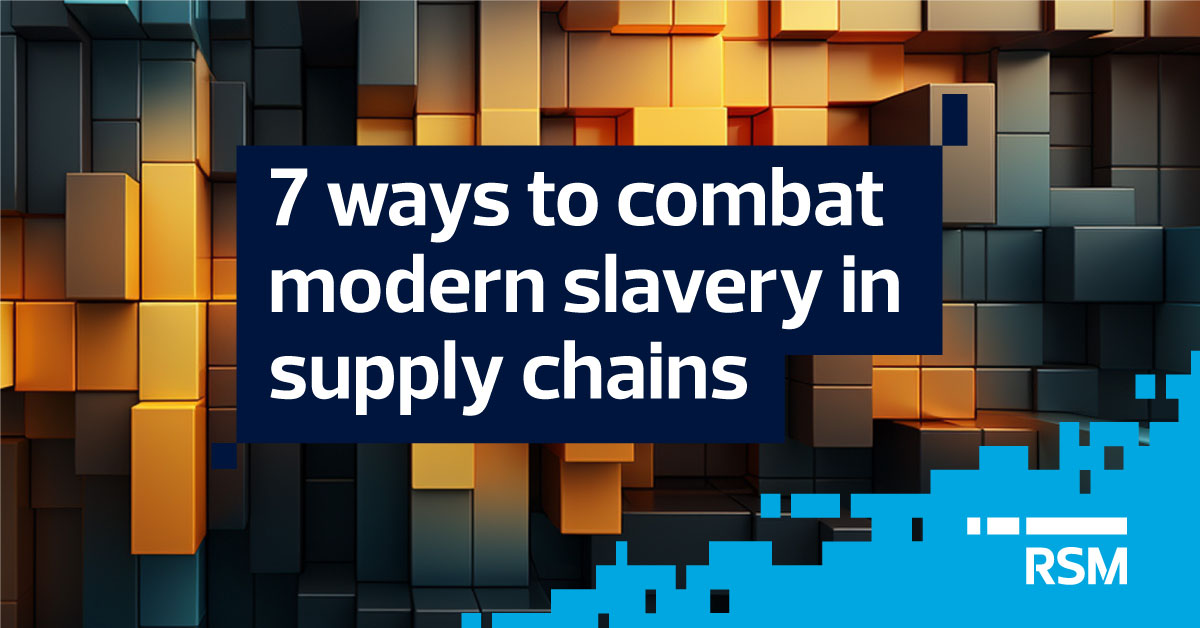7 ways to combat modern slavery in supply chains

The path forward for middle market companies
Given these insights, it is imperative for middle market companies to take proactive steps to gain awareness of forced and child labor in their supply chains as their first step toward eradication. Here are strategic recommendations to guide this process:
1. Implement zero-tolerance policies: Develop and enforce more comprehensive zero-tolerance policies regarding forced and child labor. Clearly communicate these policies and consequences, contractually as required, to your suppliers, vendors and contractors.
2. Enhance due diligence and transparency: Conduct thorough due diligence beyond Tier 1 suppliers. Utilize AI and advanced supply chain data analytics to trace supply chains to Tier 2 and Tier 3 levels. Require suppliers to provide detailed reports and evidence of compliance. And note that some industries, such as fashion, generally require fourth- and fifth-tier due diligence.
3. Address identified risks with practical solutions: Work closely with suppliers to address and mitigate identified risks. This may involve investing in local initiatives to improve labor conditions or transitioning to more ethical suppliers.
4. Foster a culture of accountability: Create a culture of accountability where due diligence is not just expected but verified. Regular audits, independent assessments and public reporting can reinforce this culture.
5. Establish training and awareness programs: Introduce mandatory training programs for employees and suppliers to raise awareness about forced and child labor. Educate them on identifying risks and reporting suspicious activities.
6. Collaborate on industrywide solutions: Work with industry peers to develop standardized requests and solutions for suppliers. This collective approach can reduce decision paralysis and alleviate the burden on suppliers, leading to more effective enforcement of ethical practices. Eliminating modern slavery expeditiously through sharing problematic suppliers and suitable alternatives should transcend the supply chain “secret sauce” attributed to preserving competitive advantage.
7. Leverage technology and data: Use technology to monitor and manage supply chains continuously. Artificial intelligence, blockchain and other innovative supply chain diligence tools can provide real-time insights and enhance transparency while continuously and proactively helping to manage supplier risk.
link





